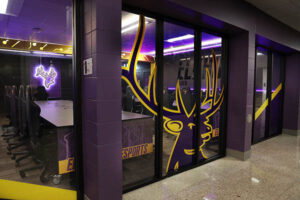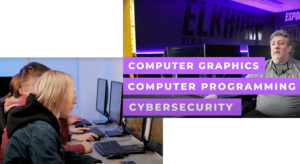Setting Up Success
Setting Up Success in Your Esports Program
Jeff Palumbo, Director of Esports – Palmer Hamilton
Watch our YouTube series part two of Jeff Palumbo interviews.
Starting an esports program can seem like a daunting task. However, having the right pieces in place at the right time can be an almost guaranteed recipe for success. Finding where, what and who those pieces are is a matter of asking the right questions.
Where?
Location is an important first consideration when designing an esports space. This can look different depending on the school environment. Colleges and universities tend to have a dedicated, unused space that they can convert into an esports lab, while K-12 schools may have to get creative or build esports capabilities into a multipurpose room that serves as a classroom during the day and esports lab after school lets out.

What?
The components that go into an esports room can be separated into three categories: equipment, decor and the program itself. As a rule of thumb, I would recommend that programs start with at least two gaming consoles, two TVs and six PCs to allow team gameplay with any of the top esports titles. Spaces can be built up from less, and most programs grow to include more, but this is a good minimum.
DIY design and management is usually just fine for clubs, but when the esports community at a school becomes a “program” with funding behind it, there is more emphasis on measurable results. Professional designers can create a consistent feel in the space that draws people in, while esports advisors can help with operational management, engagement strategies and current program trends to keep your program relevant.
Who?

What’s Next?
While these tips are true across most applications, every school is different. There will be nuances to the space, community and program that are completely unique to you. That is why Palmer Hamilton prioritizes a consultative approach to esports with free advising, expertise and resources like our esports video series to ensure you are set up to succeed. Feel free to reach out to us, and we’ll schedule a time to chat with you about your program!

